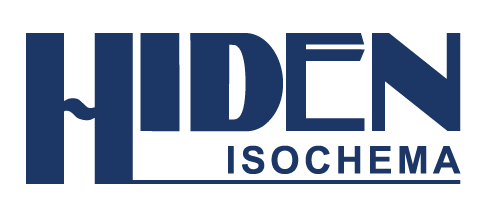The study of sorption effects on the structural properties of the materials is most commonly carried out using the following techniques: manometric technique, gravimetric technique and temperature-programmed desorption (TPD).
Manometric technique (also known as Sieverts’ method) employs an isothermal system of fixed volume, where sorption is determined through measuring P. Gravimetric technique uses a microbalance that measures weight change to determine sorption. TPD determines the amount of hydrogen desorbed by the material as a function of T.
This article describes the principles and methodology of the gravimetric technique used for determining the amount of hydrogen absorbed by the material.
Principles of the Gravimetric Technique
The gravimetric technique involves loading the sample and a counterweight onto a microbalance. The sample weight is directly measured as a function of the applied pressure and temperature, and it is possible to make isobaric (constant pressure) and isothermal (constant temperature) measurements. The gas delivery/control option can allow operation in more complex modes.
Vacuum (static) mode typically operates with pure gas at a series of pressures above vacuum, sorption uptake is measured as a function of pressure. This requires a suitable gas inlet and vacuum valve to control total pressure only.
Dynamic mode maintains a gas flow through the sample chamber, measuring sorption uptake as a function of pressure, total flow rate, gas composition etc. This requires a suitable gas inlet and outlet valves to control pressure, flow and composition. The gas mixture is delivered directly to the sample. This also allows direct hyphenation with a gas analyzer (such as GC, MS) for the analysis of downstream species.
.jpg)
Figure 1. Gravimetric measurement set up
Gravimetric Measurement Method
The following steps are involved in the gravimetric measurement methodology:
- Loading of the sample into the gravimetric analyzer
- In-situ degassing and activation – the sample weight is directly measured during degassing/activation for gravimetric measurements which allows the process to be monitored and helps to ensure completion
- Application of hydrogen pressure to the sample at pre-determined values of pressure/ temperature and the sample weight being recorded
- Determination of the amount of sorption uptake based on weight change.
Sample degassing and activation:
Before hydrogen sorption, samples must be prepared. There are different sample preparation processes for porous materials and hydrides, but both always begin with degassing to eliminate any environmental contaminants, such as pre-absorbed water.
Hydride activation involves the hydrogenation/dehydrogenation of the metal host, which is often accompanied by decrepitation, where the brittle host breaks up into fine powder. However, some metals, such as palladium, remain intact but hydrogenation should still be initiated. Activation is carried out under conditions most suitable for the particular material. It will often require repeated cycling.
Activation of porous materials is carried out by exposing the sample to a vacuum and elevated temperature. As a result, desorption of chemisorbed and physisorbed species takes place. In some cases, the process can be more involved. Zeolites, for example, require degassing in stages due to their level of hydrothermal stability.
Once in the gravimetric instrument, the sample is exposed to a vacuum in a controlled manner, where the pressure in the sample chamber and above the vacuum pump is continuously monitored until it reaches base vacuum i.e. 10-6 mbar or even more. The sample weight is monitored until it reaches a steady value, the dry or unloaded weight. This ensures the system and sample begin the measurement process “clean”, which is the equivalent of a baking process in UHV systems.
Applying Hydrogen Pressure: Vacuum Mode
The vacuum method involves measuring the pressure as hydrogen is introduced into the chamber through the inlet valve. Active pressure regulation is possible using the feedback control from the pressure sensor. This allows measurements at constant chemical potential. Desorption is measured by removing hydrogen from the chamber via the vacuum valve. Continuous weight measurement gives kinetics as well as equilibrium data.
Applying Hydrogen Pressure: Dynamic Mode
In dynamic mode, hydrogen pressure is delivered by passing gas through mass flow controllers. The pressure is controlled through downstream regulation, where feedback is obtained from the pressure sensor, this mode allows mixed gas measurements.
Real Time Analysis
Hiden Isochema’s gravimetric instruments uniquely employ the IGA method allowing the simultaneous measurement and analysis of sorption equilibria and kinetics. Figure 2 shows the results of sorption kinetics analysis using IGA method. It is evident from the figure that gas pressure is ramped to target pressure, Pn, and then maintained constant. Equilibrium, En, can be predicted by analyzing the weight change. Equilibrium points are collected, checked for buoyancy and plotted as an isotherm.
.jpg)
Figure 2. Results of sorption kinetics analysis using IGA method
Conclusion
The gravimetric technique is one of the three main methods used to measure hydrogen uptake by materials. The gravimetric technique uses a microbalance and measures weight change to determine sorption. This article has covered the principles of the technique and some important aspects of measurement methodology.
About Hiden Isochema
Hiden Isochema is a world leader in the design and manufacture of gas and vapor sorption instrumentation for research, development and production applications in surface chemistry and materials science.
We have been producing sorption measurement systems since 1992 when Hiden Analytical first began manufacturing the Intelligent Gravimetric Analyzer (IGA). Following a decade of continued success, Hiden Isochema was formed as a wholly-owned subsidiary of Hiden Analytical in order to further specialize in the development and manufacture of sorption-specific instrumentation. The two companies are now members of the Hiden Instruments Group.
Since then, we have expanded our product range to include unique climate control and manometric sorption systems, and we continue to strengthen our reputation for delivering high quality and versatile instrumentation while providing industry-leading levels of technical support.

This information has been sourced, reviewed and adapted from materials provided by Hiden Isochema.
For more information on this source, please visit Hiden Isochema.